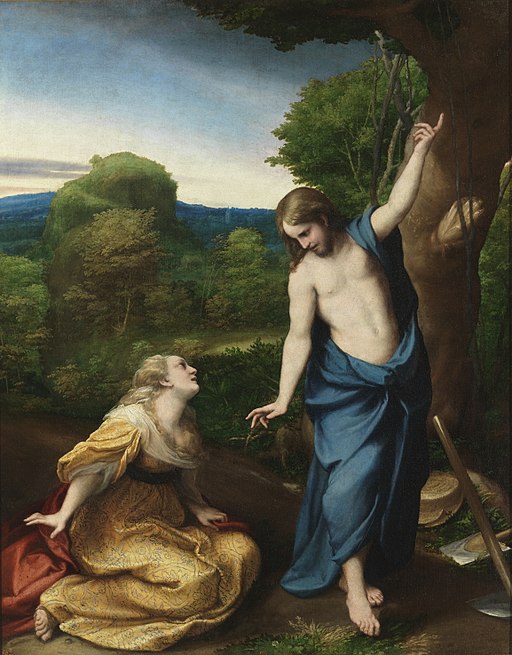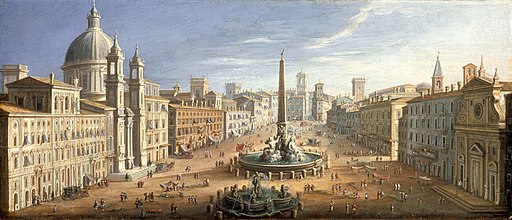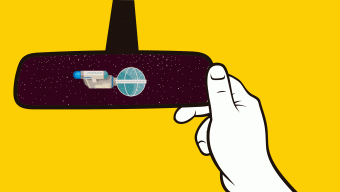The student who pays no heed to anything other than books is a tale as old as time. Such is the case of Tomás, the protagonist of one of Miguel de Cervantes’ Exemplary Novels, the story The Glass Lawyer. The adventure begins when Tomás is bewitched by one of those ladies “who belong to all the points of the compass” and becomes the object of the poor law graduate’s disdain. Tomás is gripped by unparalleled madness, and the story furnishes us with one of the best descriptions that the modern subject has ever received (overshadowed only, deservedly so, by Cervantes’ other great novel that also happens to be about someone obsessed with books):
The unhappy man imagined that he was entirely made of glass; and, possessed with this idea, when anyone approached him he would utter the most terrible outcries, begging and beseeching them not to come near him, or they would assuredly break him to pieces, as he was not like other men but entirely of glass from head to foot.
[…] He exhorted everyone to speak to him from a great distance; declaring that on this condition they might ask him what they pleased, and that he could reply with all the more effect, now he was a man of glass and not of flesh and bones, since glass, being a substance of more delicate subtlety, permits the soul to act with more promptitude and efficacy than it can be expected to do in the heavier body formed of mere earth.
Among the first descriptions that human beings sought for themselves at the dawn of Modernity was to be transparent within, to have a delicate and clear, glass-like inner self, and to reach complete understanding. Saint Ignatius of Loyola versed on this in The Spiritual Exercises, as did René Descartes in the Regulae ad directionem ingenii (Rules for the Direction of the Mind) and Discourse on Method. It is no coincidence that the latter (confined by illness for a large part of his studies) learned geometry at the Jesuit-run Collège Henri-IV de La Flèche, but it is somewhat paradoxical that this is the same school where, more than a century later, another philosopher, David Hume, lived for a time. Hume, who like the Glass Lawyer and Descartes did not end up pursuing a career in law, wrote a substantial part of his Treatise of Human Nature at the school, a body of work through which he discovered that this delicate, glass-like subject was nowhere to be found.
To be completely self-transparent, to bend one’s reflection entirely back on oneself, presupposes forgetting the tangible and the “heavier body formed of mere earth.” This, in turn, leads to the horror of touch and a morbid fascination of the tangible that characterizes the onset of Modernity. This is in line with the discovery of the delicate, fragile nature of a subject that believes itself to be made of glass, as Tomás did, and to the withdrawal into the inner self that this entails.
Modernity’s thorough deployment of the notion of the human being coincides with the Baroque. “Do not touch” seems to be the watchword of this era. There is more than one work in the Prado Museum entitled Noli me tangere (Do not touch me). In Correggio’s version, Christ Resurrected prevents Mary Magdalene (the yellow of her dress discreetly revealing her past and her moral distance from the glorious body of the Redeemer) from touching him, as the time is not yet right. Painters in the 16th-18th centuries were obsessed with the dynamics of the scene thanks to its portrayal of unfulfilled longing, of something desired yet unfinished. In fact, Eugenio d’Ors speaks of this work as a synopsis of the Baroque, of the tension between opposites and those forces that never quite collide.
Correggio’s Noli me tangere c.1525
The sensibility of the Baroque feeds on a lack of coincidence, the distance between forms, their centrifugal eagerness, and on the absence of contiguity. Forms escape and fugue – the fugue is one of the most discerning musical forms of the baroque – and they cease to coincide and have continuity between them, and contiguity in space. The core of the heliocentric Copernican movement is replaced by the two focal points of the ellipse in which Kepler traces planetary movements, as if the focal points of this new tracing of planetary movements were the two chiese gemelle in the Piazza del Popolo, as if the form of the Piazza Navona had risen to the heavens in one of those spiraling, upward ascensions of seventeenth-century sensibility.
Hendrik Frans van Lint’s View of Piazza Navona c.1730
In the celebration of the 1650 Jubilee, the Piazza Navona was precisely the stage that Pope Innocent X chose to showcase the new ‘form’ of feeling and motion, as an expression of touch and sight, and it was this same pope who condemned Jansenism in the papal bull Cum Occasione in 1653. Jansenist moral rigorism (and its withdrawal into the inner soul) disapproved of the liturgical closeness that the Pope had rendered tangible in the Jubilee celebration, and advocated putting distance between God and the human being: noli me tangere. The fact that the Jansenists inspired the fashion of exposing the ostensorium with the Blessed Sacrament at the top of a gilded cascade-like reredos (which explains why the original use of certain niches was quickly abandoned in some Austrian and Spanish altarpieces) and advised for infrequent communion to emphasize that sense of distance, a lack of contiguity, and the abyss between God and human creatures.
It’s these very abysses, the gaps, that astounded Blaise Pascal, who was extremely close to Jansenism and (also physically) to the convent of Port-Royal (the name, incidentally, of a logic, the Port-Royal logic, focused on making thought movements transparent):
I see those frightful spaces of the universe which surround me, and I find myself tied to one corner of this vast expanse, without knowing why I am put in this place rather than in another, nor why the short time which is given me to live is assigned to me at this point rather than at another of the whole eternity which was before me or which shall come after me. I see nothing but infinites on all sides, which surround me as an atom, and as a shadow which endures only for an instant and returns no more.
Pascal’s Treatise on the sines of a quadrant of a circle had a huge impact on Gottfried Leibniz and his discovery of infinitesimal calculus, the purpose of which is precisely (in the differential equation) to calculate the slope of the tangent line to a curve. In all the investigations conducted by Kepler, Cavalieri, Descartes, Fermat, Torricelli, Antonio Hugo de Omerique (born in Sanlucar de Barrameda), Barrow, etc. that led to the discovery of the fundamental theorem of calculus (halfway between two investigations that apparently did not coincide, those of Isaac Newton and of Leibniz), the obsession is palpable regarding the infinite approach and the increments in one dimension that are never complete with respect to a second one. It is the fascination for distance and for grasping infinity itself (because what is infinitely divisible is whatever does not admit distance within itself), for grasping what is pure contiguity that cannot be solved in unity or identity, the intractable, like the Cartesian res extensa. The untouchable, intangible res extensa has no point of contact with the res cogitans: the untouchable exterior and interior, asymptotic lines forever, in an infinite approach.
Dutch Nautilus cup, 1602. The shape of the shell is a classic symbol of continuous growth, a key concept in calculus.
Baroque architecture continually recreates this pretension of infinite escape, continuous retraction and folding – hence the severing of chapel and façade, as seen by Deleuze (The Fold: Leibniz and the Baroque), who defines the Baroque trait as “an exterior always on the outside, an interior always on the inside.” The blind windows and doors of the façade speak to us of an autonomous, untouchable, inaccessible interior. And, as Deleuze sees it, this trait finds its expression in the monads, the Leibinizian correlate of the ancient notion of substance.
When Leibiniz comments that “monads have no windows,” that nothing enters or leaves them, he is explaining their separateness and all-inclusiveness. As the indivisible entities that make up the world, monads contain a representation of that world – and also do not come into contact with it, they do not interact with one another or with matter. They are like convex, Baroque mirrors which reflect everything and reflect each other, without touching each other. And following the logical principle of the identity of indiscernibles, this representation is unique and unrepeatable. The perspective of one and the other cannot be exactly the same.
We individuals are a prime example, with our body a monad and our soul another – and they do not interact. This concept can also be seen in the Baroque chapel and façade (the body is blind and also “heavy and formed of mere earth”) and, another example, in how Rembrandt’s The Anatomy Lesson is from 1632, the same year that Ribera painted the Allegory of Touch. Only a coincidence or a pre-set harmony (like two clocks set moving at the same time) can make the intention of a movement match a bodily movement.
Rembrandt’s The Anatomy Lesson (left) and Ribera’s Allegory of Touch, both 1632.
This is akin to how we have existed in times of pandemic, in this time of the current pandemic. We have withdrawn into ourselves, into an interior that is only interior, into a Baroque chapel blind to the outside, with nothing coming in or going out. We find ourselves only accessing the complete representation of the world that is this digital mirror of the screen. To quote the contemporary Spanish philosopher Javier Echeverría, we are “Cosmopolitas domésticos” (domestic cosmopolitans) who, like non-extendable points, access the world without touching each other.
Just as Bishop Berkeley at the beginning of the 18th century invited us to do away with the idea of matter and to get used to the idea that everything was perceived in God, the pandemic created a vanished reality, which we perceived in an all-encompassing digital mind… or digital abyss. To quote Pascal, “…I see the terrifying spaces of the universe that enclose me, and I find myself attached to a corner of this vast expanse, without knowing why I am more in this place than in another…”
We find ourselves, once again obsessed with distance and the fragility of a subject who does not want be neared or touched and is in constant withdrawal, and dealing with the resulting frustration caused by the promise of real contact that never materializes – much like two asymptotic lines and the movements in Correggio’s painting. We are left at the very same crossroads as the Baroque.
The beginning of Modernity points to a possible way forward: the path of visual mediation. The Baroque embraced the intermediate world in which we see each other but do not touch, a way of being that prioritizes images and the sense of sight. It embraced representational mediation between us and reality: knowledge as pseudo-visual representation (Locke), the world as a theatrical representation (Calderon), the city as a theatre (Bernini, Borromini, Seville); and the intermediate world of a dreamlike vision (Ribera, Calderon, Descartes) and agnosia (Cervantes). And our culture can embrace that world outside itself, data side by side with data, without integration or unity, the digital scenarios in which a trompe l’oeil of reality unfolds, a fughetta where the dense, tangible reality, the leading melody, the dux, vanishes and all that remains is ongoing repetition, a continuous follower, or comes, with no beginning. An unreal world of partes extra partes, imagines extra imagines, without anything to render them intimate, to make them part of a framework with an interior and meaning.
We can also opt for another path, the one opened up by the Baroque: inner exploration. This is linked to hearing, to listening, to music and to what is connected before after, according to contiguity with meaning. This – music – is the touch of intimacy: the exploration of the dwelling places of the interior castle (Saint Teresa of Jesus), the abysses of the soul (Fénelon), the discovery, according to the before and after, of what one knows, wants and hopes (Saint Francis de Sales). It is also attentiveness (Malebranche: attentiveness is the natural prayer of the soul), including to the abysses of another’s interiority and the challenge of listening to their story (Cervantes), looking at their face (enter Velázquez and the distant Pope Innocent X at the Doria-Pamphili Palace), and allowing ourselves to be soothed by its inner rhythm (Bach, the Oratorians.) And, above all, inner exploration allows us to listen to the most intangible and the most tangible, the closest and the most distant, the most localized and the least – that which Mary Magdalene could only aspire to touch because it is, above all, what is heard and thus untouchable: the Word.
© IE Insights.












